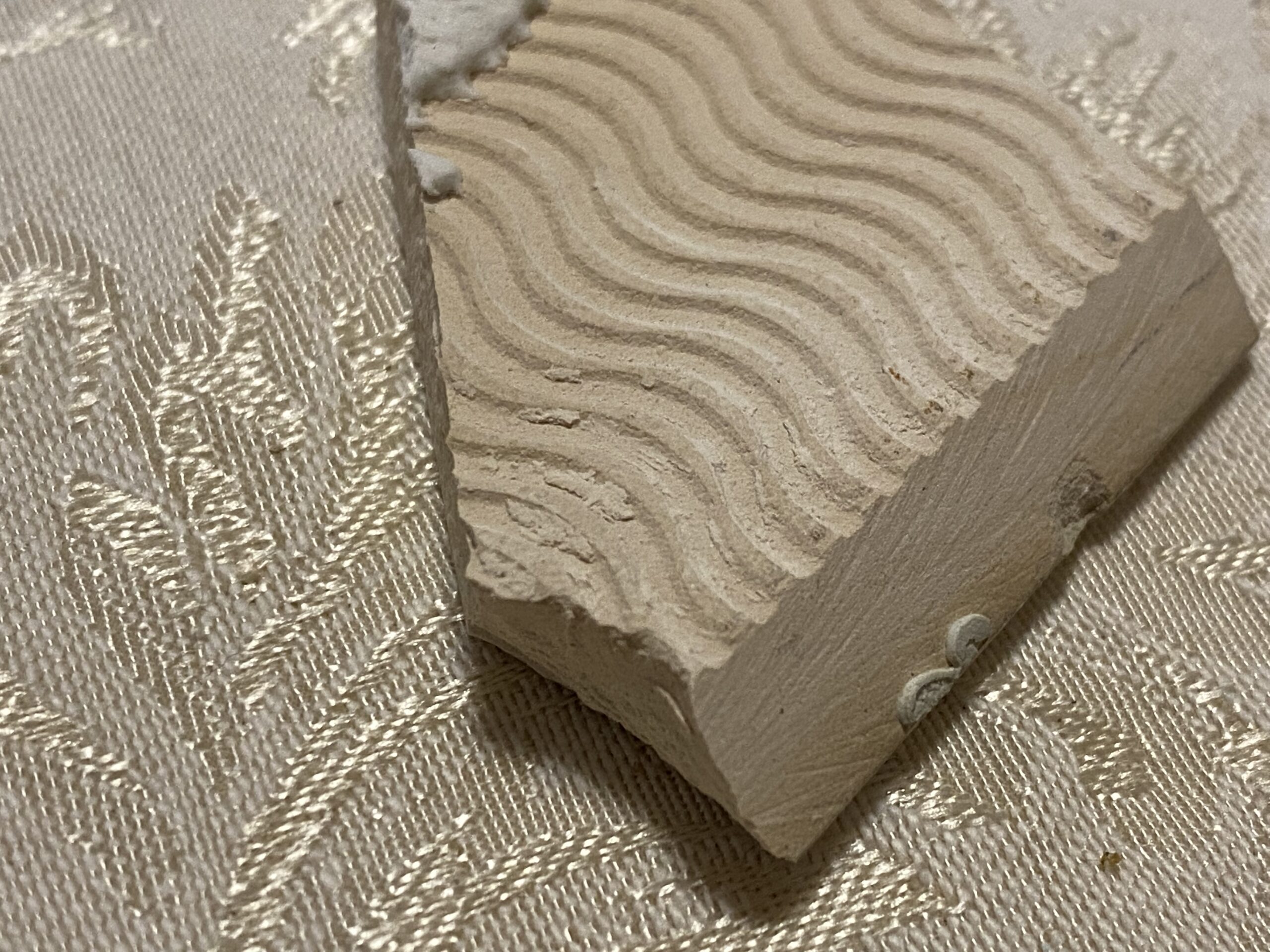Kitchen/bathroom tiles from South Africa: 4,828-16,100 ppm Lead in the glazed surfaces
For those new to this website:
Tamara Rubin is a multiple-Federal-award-winning independent advocate for childhood Lead poisoning prevention and consumer goods safety, and a documentary filmmaker. She is also a mother of Lead-poisoned children (two of her sons were acutely Lead-poisoned in 2005). Since 2009, Tamara has been using XRF technology (a scientific method used by the U.S. Consumer Product Safety Commission) to test consumer goods for toxicants (specifically heavy metals — including Lead, Cadmium, Mercury, Antimony, and Arsenic). All test results reported on this website are science-based, accurate, and replicable. Items are tested multiple times to confirm the test results for each component tested. Tamara’s work was featured in Consumer Reports Magazine in February of 2023 (March 2023 print edition).
These tiles were shipped to me from a reader in South Africa
I do not know the country of manufacture for the tiles (they may or may not have been manufactured in South Africa — but are fragments of tile that came from a home in South Africa), though I wanted to document this on the website to help demonstrate that Lead-in-tile is an issue across the globe. I had not previously tested tile from South Africa, but was not surprised to find high levels of Lead in the surface glaze.
#1.) White tile — shiny glazed front of tile
60-second reading — repeated multiple times to confirm results
- Lead (Pb): 4,828 +/- 60 ppm
- Cadmium (Cd): non-detect
- Mercury (Hg): non-detect
- Bromine (Br): 7 +/- 2 ppm
- Chromium (Cr): 142 +/- 82 ppm
- Iron (Fe): 1,253 +/- 51 ppm
- Copper (Cu): 125 +/- 13 ppm
- Zinc (Zn): 55,700 +/- 500 ppm
- Zirconium (Zr): 10,500 +/- 100 ppm
- Tin (Sn): 9 +/- 4 ppm
- Barium (Ba): 227 +/- 19 ppm
- No other metals were detected
Continue reading below the image.
#2.) White tile — ribbed unglazed back of tile
60-second reading — repeated multiple times to confirm results
- Lead (Pb): 118 +/- 6 ppm
- Cadmium (Cd): non-detect
- Mercury (Hg): non-detect
- Bromine (Br): non-detect
- Chromium (Cr): non-detect
- Iron (Fe): 9,053 +/- 150 ppm
- Zinc (Zn): 859 +/- 22 ppm
- Titanium (Ti): 1,455 +/- 491
- Zirconium (Zr): 339 +/- 6 ppm
- Tin (Sn): 10 +/- 3 ppm
- Barium (Ba): 109 +/- 13 ppm
- Bismuth (Bi): 14 +/- 4 ppm
- No other metals detected
Continue reading below the image.
#3.) Brown tile — glazed front of tile
60-second reading — repeated multiple times to confirm results
- Lead (Pb): 16,100 +/- 200 ppm
- Cadmium (Cd): non-detect
- Mercury (Hg): non-detect
- Bromine (Br): non-detect
- Chromium (Cr): non-detect
- Manganese (Mn): 1,253 +/- 86 ppm
- Iron (Fe): 3,866 +/- 96 ppm
- Copper (Cu): 366 +/- 20 ppm
- Zinc (Zn): 17,800 +/- 200 ppm
- Titanium (Ti): 18,100 +/- 600 ppm
- Zirconium (Zr): 16,200 +/- 200 ppm
- Indium (In): 10 +/- 4 ppm
- Tin (Sn): 23 +/- 5 ppm
- Antimony (Sb): 521 +/- 13 ppm
- Barium (Ba): 92 +/- 21 ppm
- Platinum (Pt): 126 +/- 40 ppm
- No other metals detected
#4.) Brown tile — unglazed back of tile
60-second reading — repeated multiple times to confirm results
- Lead (Pb): 214 +/- 9 ppm
- Cadmium (Cd): 9 +/- 2 ppm
- Mercury (Hg): non-detect
- Bromine (Br): non-detect
- Chromium (Cr): non-detect
- Iron (Fe): 16,600 +/- 200 ppm
- Zinc (Zn): 202 +/- 11 ppm
- Titanium (Ti): 4,150 +/- 484 ppm
- Zirconium (Zr): 920 +/- 12 ppm
- Nb: 273 +/- 8 ppm
- Indium (In): 7 +/- 3 ppm
- Tin (Sn): 20 +/- 4 ppm
- Antimony (Sb): 85 +/- 6 ppm
- Platinum (Pt): 41 +/- 14 ppm
- Bismuth (Bi): 32 +/- 4 ppm
- No other metals detected
Two additional images are below.

Never Miss an Important Article Again!
Join our Email List














